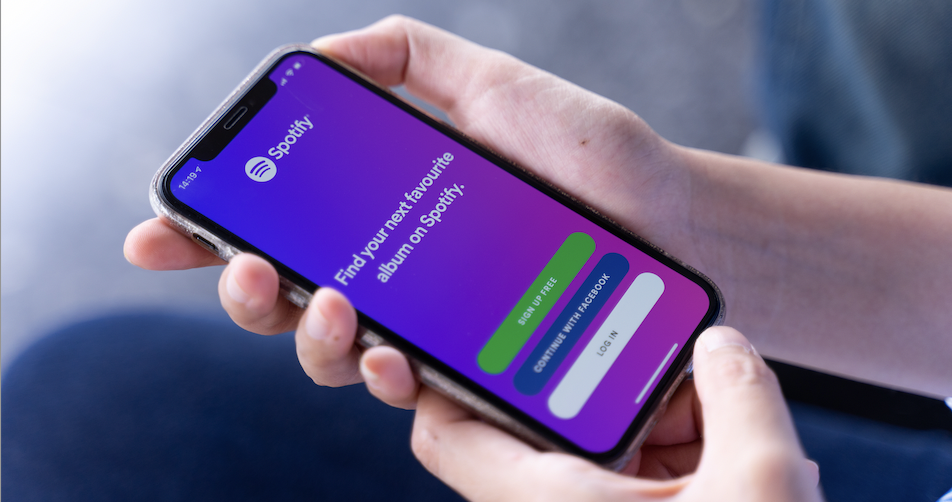Brands leveraging technology to transform their business
James Crooke
From marketing automation to AI, technology evolves and brands take advantage.
We will be taking a closer look at how companies like Amazon and Spotify are implementing these technologies to enhance their customer experience, streamline operations, and improve overall business performance.
As technology continues to evolve, brands find new and innovative ways to use it. Companies are leveraging these technologies to transform their businesses from marketing automation to artificial intelligence, virtual and augmented reality, customer relationship management, data analytics, and business intelligence.
Amazon, Spotify, and Volkswagen are just a few examples of brands successfully implementing these technologies to enhance the customer experience, streamline operations, and improve overall business performance. This article delves into how these brands leverage various technologies to transform their businesses and stay ahead of the competition.
Marketing Automation
Marketing automation is using software to automate repetitive marketing tasks and processes, such as sending emails, social media posts, and targeted advertising. Marketing automation aims to streamline marketing activities, improve efficiency, and enhance the customer experience.
Amazon
Amazon is a prime example of a brand that uses marketing automation to personalise email marketing campaigns. By analysing customer behaviour and purchase history, Amazon can create highly targeted email campaigns that are relevant and tailored to individual customers' preferences. For instance, if a customer has previously purchased items in a particular category, such as electronics, Amazon will send emails promoting new products, increasing the likelihood of a purchase.
Starbucks
Starbucks also uses marketing automation to enhance the customer experience through its mobile app. The app analyses customer data, such as purchase history and location, to suggest personalised offers and rewards to customers. By offering tailored promotions and rewards, Starbucks can increase customer loyalty and engagement while providing a personalised experience that meets each customer's unique needs and preferences.

Artificial Intelligence (AI)
AI is a branch of computer science that focuses on creating intelligent machines that can perform tasks that typically require human intelligence, such as learning, problem-solving, and decision-making. AI is used across various industries, including entertainment, healthcare, finance, and marketing, to name a few.
Netflix
Netflix is a prime example of a brand that leverages AI to personalise its content recommendations for viewers. By analysing viewing history, preferences, and other data points, Netflix's AI algorithms can suggest TV shows and movies that are tailored to each viewer's interests. This personalisation increases engagement and helps keep viewers watching, leading to higher satisfaction and loyalty.
Spotify
Spotify uses AI to personalise music recommendations for users. The app analyses the listening history, favourite artists, and other data to suggest playlists and songs tailored to each user's preferences. By offering personalised recommendations, Spotify can increase user engagement and retention, leading to higher revenue and growth.

Virtual and Augmented Reality (VR/AR)
Virtual and Augmented Reality (VR/AR) are immersive technologies that enable users to experience a computer-generated environment realistically. While VR creates an entirely virtual world, AR overlays virtual objects onto the real world. These technologies have been used in various industries, including gaming, education, healthcare, and retail.
Ikea
Ikea's AR app allows customers to visualise how furniture would look in their homes before purchasing. Customers can use their smartphone camera to place virtual Ikea furniture in their homes and see how it fits with their existing décor. This AR experience enhances the customer's shopping experience and can increase confidence in their purchase decisions.
Volkswagen
Volkwagen is an example of a brand that uses VR to simulate car designs and test new features before building physical prototypes. By creating a virtual prototype, Volkswagen can test different designs and features without needing expensive physical prototypes. This saves time and money and allows for faster iteration and innovation.

Customer Relationship Management (CRM)
Customer Relationship Management (CRM) refers to a set of tools, strategies, and technologies companies use to manage and analyse their interactions with customers and improve their relationships with them. CRM helps companies understand their customers better, target the right customers, and personalise their marketing and sales efforts.
Salesforce
Salesforce is a popular cloud-based CRM system that allows businesses to manage customer data, track customer interactions, and automate sales and marketing tasks
Hubspot
HubSpot is another marketing, sales, and service software with CRM functionality to help businesses track customer interactions and manage sales pipelines.
Data Analytics and Business Intelligence (BI)
Data Analytics and Business Intelligence (BI) involve collecting, analysing, and interpreting data to make informed business decisions. This approach can help businesses identify patterns, trends, and insights that would otherwise be difficult to detect.
Tesco
Tesco is an example of a company that uses data analytics to optimise its supply chain, reduce costs, and improve the customer experience in its stores. They use data to proactively stock “trending” goods, or weather-related impulse purchases, ensuring customers can purchase items they need quickly and easily.
Google Analytics
Google Analytics is a free tool that businesses can use to track website traffic, user behaviour, and conversion rates to optimise their online presence. This data can help businesses improve their website's user experience, make data-driven marketing decisions, and increase sales.
Final Thoughts
Technology is a key driver of success for businesses in different sectors. As seen in the case of Amazon, Spotify, and Volkswagen, incorporating technologies like marketing automation, artificial intelligence, and business intelligence can help companies improve their operations, customer experiences, and overall performance. As technology evolves rapidly, businesses must keep up with the latest developments and leverage them to gain a competitive edge.

